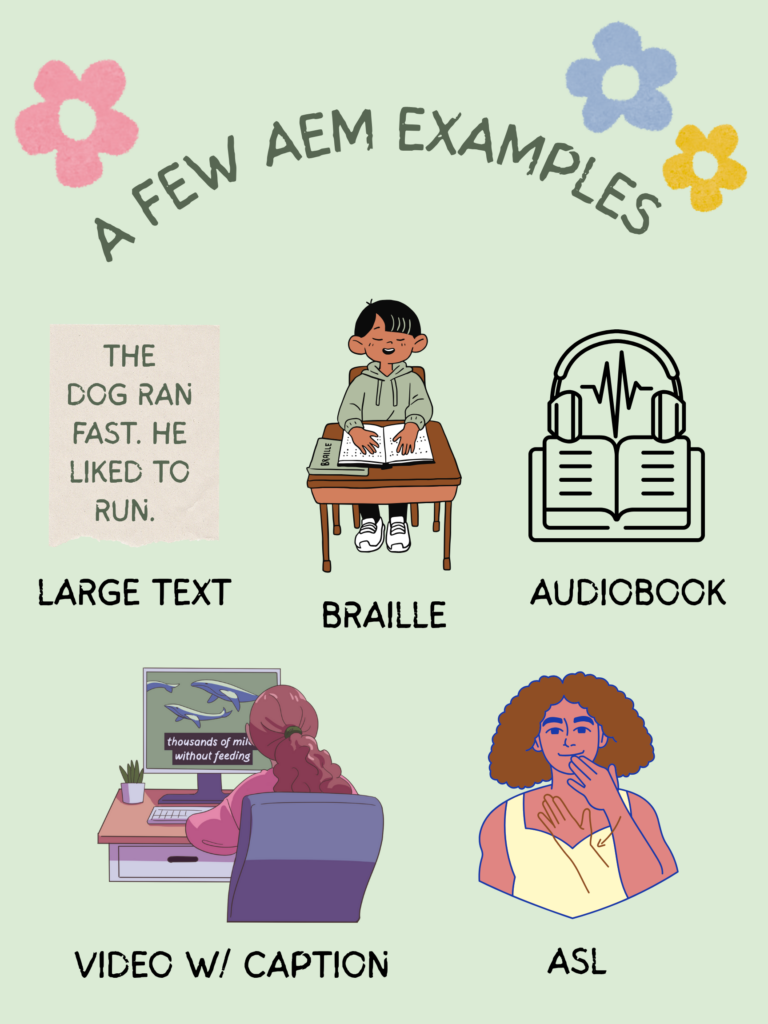Accessible Education Materials (AEM) are printable and technological materials that help students with challenges to read and comprehend information the same as their peers. Some examples of AEM are, braille, digital text, large print, audiobooks, and videos with captions. Providing students with multiple formats is crucial to their learning journey.

AEM isn’t just for literacy- based subjects. It can also be used for Math and Science. Through my research, I found a concept called MathML. MathML is software that stores data and code. It takes a mathematical equation that can be interpreted by screen readers or display braille for the learner. Although this technology is more advanced and likely for high school-onward, I thought it was worth looking into as it creates equal opportunities for students in math education.
Another new AEM I’ve learned about is Interactive digital resources. These are multimedia resources that include captions, sign language interpretation, and other accessibility features. There are several different ASL websites and tools you can find online, as well as websites used for students with other needs.
Prodigy lists the top 20 distance learning tools to accelerate virtual learning. There are several well trusted websites in this list I’ve seen being used in school district 5. For some students, the examples listed might be the only way they can receive engagement and real feedback on how they are learning and growing. Interactive digital resources are important to look into as an educator, as our society is utilizing technology more than ever before.

Another digital resource I’d like to highlight as an AEM is IXL, a personalized learning platform for K-12 learners who need some extra support. The website provides curriculum-based content in Math, Literacy, and Science. After playing around on the website in class, I discovered it uses a diagnostic assessment to identify knowledge gaps in learners. Students can utilize adaptive exercises, videos, and games to help them practice their skills. Educators can assign student’s with personalized tasks to be completed. When answering questions, there is a sound button for the question to be read aloud, as well as a blue pencil icon that opens up a scratch pad for the students to take notes. If you are unsure how to answer a question, at the top of the page, you can click on “provide a similar example” or view a tutored video explanation. After completing a set of questions, students can better understand how the questions could have been answered through an explanation provided by IXL. Points and prizes are earned throughout your time working on IXL. This would be an excellent option for students who work better on a screen, need some extra reinforcement in an engaging way, or are working from home.
Here is an example for grades 3-8 on how to get started on IXL YouTube. They also provide videos for Pre-K- grade 2, and grades 9-12, as well as many other educational tutorials.
Although I’ve always known about the concept of AEM, I didn’t realize how vast the subject area is. There are many AEM resources available (paper- based and technology-based) to assist students in their learning journeys. Resources such as IXL is just one example of an AEM that plan to use to support student’s in my future classroom.


Sorry, but comments are not enabled on this site.